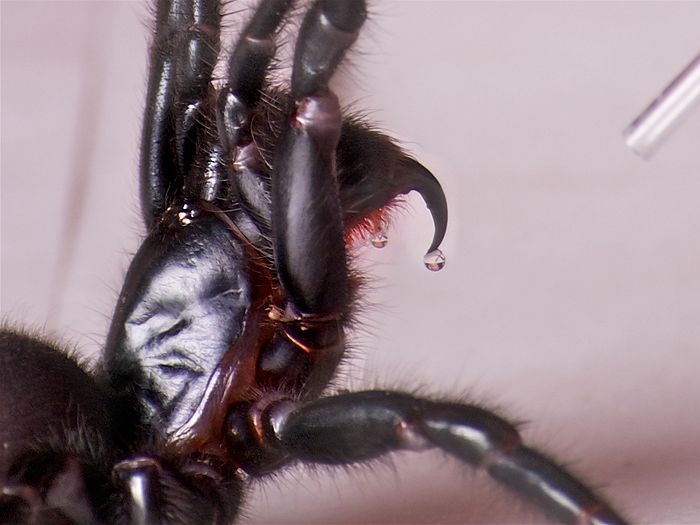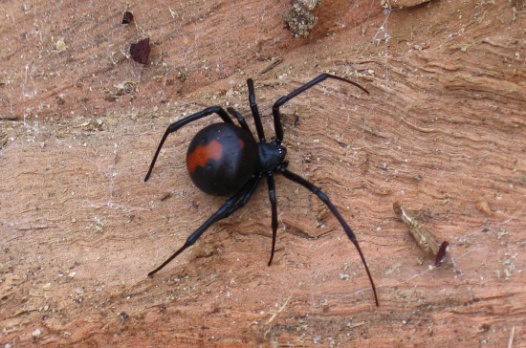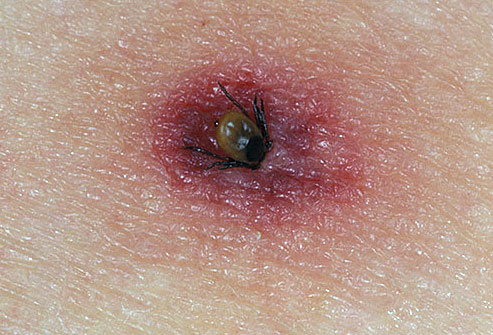Spiders
Funnel web spider
The Sydney funnel web spider is considered to be the most venomous spider in the world. It is found in the NSW coastal zone from Nelson's Bay to Nowra. Its habitat is under rocks and houses, in a web-lined burrow. The spider is very aggressive and will attack at the slightest provocation.

Despite its fearsome reputation, there are only 14 recorded deaths due to funnel web spider bite. However, when the spider does inject a dangerous quantity of venom, the effects can be rapid and severe and death within an hour may occur.
A second type of spider called the bush (or Blue Mountains) funnel web is also recorded as being responsible for fatal bites. Its habitat ranges over most of the NSW coast and the Great Dividing Range. This creature lives in trees behind the bark or in holes in the trunk. Other types of related spiders such as the northern and southern tree dwelling species, are suspected of similar venom potency and are found mostly along the south eastern area of Australia.
There are at least 37 species of funnel web spiders. All are medium to large robust spiders, mostly dark or black in colour with stout legs and large fangs. Males search for female mates, a process which may increase the chance of unwanted interaction with people, as they may get underfoot or into shoes or clothing left on or near the floor.
The funnel web will bite repeatedly if in contact with the skin and when bitten by the funnel web spider the venom enters the body similarly to that of snakes. Anti-venom is available.
Sign and symptoms:
- Pain at the site of the bite
- Pale, cool skin
- Tingling or numbness around the mouth
- Rapid, weak pulse
- Rapid onset of breathing difficulties
- Nausea and vomiting
- Abdominal pain
- Profuse sweating
- Copious production of saliva and pulmonary fluids
- Mental confusion
- Collapse - coma - death
Care and treatment:
- Treat as for snakebites
Redback Spider
This spider with the tell-tale red or orange mark on its thorax is the female of the species. The Red back spider is common all over Australia and its preferred habitat is under any old building material or inside sheds and garages.
The spider's bite is not generally regarded as fatal, although there are recorded deaths prior to the introduction of the anti-venom. Less than 20% of bites actually result in significant envenomation, but generally, the bite is very painful and causes distress.
 Signs and Symptoms:
Signs and Symptoms:
- Intense pain at the site of the bite
- May be localised redness, swelling and sweating
- Nausea, vomiting and abdominal pain
- Rapid pulse
- Loss of coordination
- Tremors and muscle spasms
- Rapid, shallow breathing
- Care and treatment:
- Reassure
- Obtain history
- Cold compress to relieve pain
- Observe casualty for any sign of deterioration
Other spiders
Other spiders associated with venomous bites are the white-tailed spider, trapdoor spider and wolf spider. The bite of these spiders causes tissue necrosis, the death of the tissue around the bitten area. A doctor should treat bites from these spiders and assess the bitten area over a period of time to observe for any detrimental effects
Ticks
 Only the Australian paralysis tick or 'scrub tick' causes envenomation in humans. Ticks are capable of spreading diseases e.g. scrub typhus. Ticks can be found anywhere on the body, but hairy areas, skin clefts and crevices should be examined carefully.
Only the Australian paralysis tick or 'scrub tick' causes envenomation in humans. Ticks are capable of spreading diseases e.g. scrub typhus. Ticks can be found anywhere on the body, but hairy areas, skin clefts and crevices should be examined carefully.
Signs and symptoms:
- Local irritation
- Lethargy
- Muscle weakness, especially in children
- Unsteady gait
- Double vision
- Difficulty in swallowing or breathing
- Rarely allergic reactions occur: - rapid local swelling - wheezing and difficulty breathing - collapse.
- Signs and symptoms generally develop over several days but allergic symptoms can occur within hours.
Care and treatment:
- Reassure
- If the victim has a history or signs of allergy: - use pressure immobilisation if possible - seek medical advice immediately
- Slide the open blades of sharp pointed tweezers on each side of the tick and lever it upwards
- Always check the whole body of the victim, including the ears, skin creases and hair for further ticks
- After removal of a tick the victim should be advised to see a doctor to check no further treatment is required.
- Avoid squeezing the tick because even slight pressure may inject more venom.
Bees
Bee stings for most people are only a temporary irritation. For others however, these stings have the potential to cause death. The venom associated with bee stings causes a severe allergic reaction in susceptible people and can cause respiratory and cardiac arrest.
Signs and symptoms
- Evidence of bee sting with the barb present
- Pain and itching at the site
- Swelling of the stung area
- In allergic casualties: - onset of wheezing and breathing difficulties - facial swelling and hives - rapid pulse - collapse
Care and treatment
- Reassure
- Remove bee sting by scraping with fingernail or similar
- Cold compress to reduce swelling and pain
- If onset of allergic reaction: - pressure immobilisation bandage - call Triple Zero (000) for an ambulance
- Rescue breaths if respiratory arrest
- Avoid squeezing or touching the barb